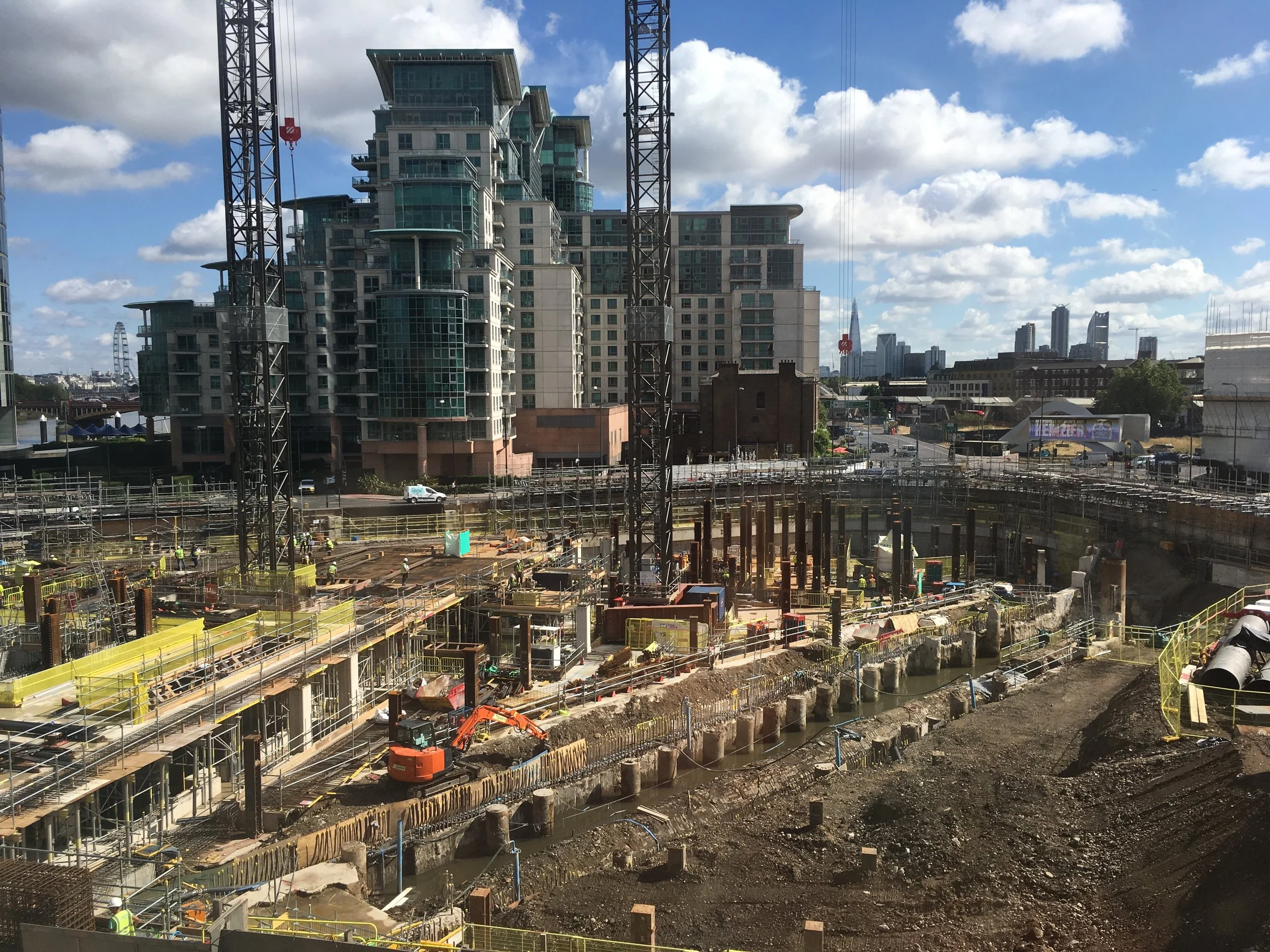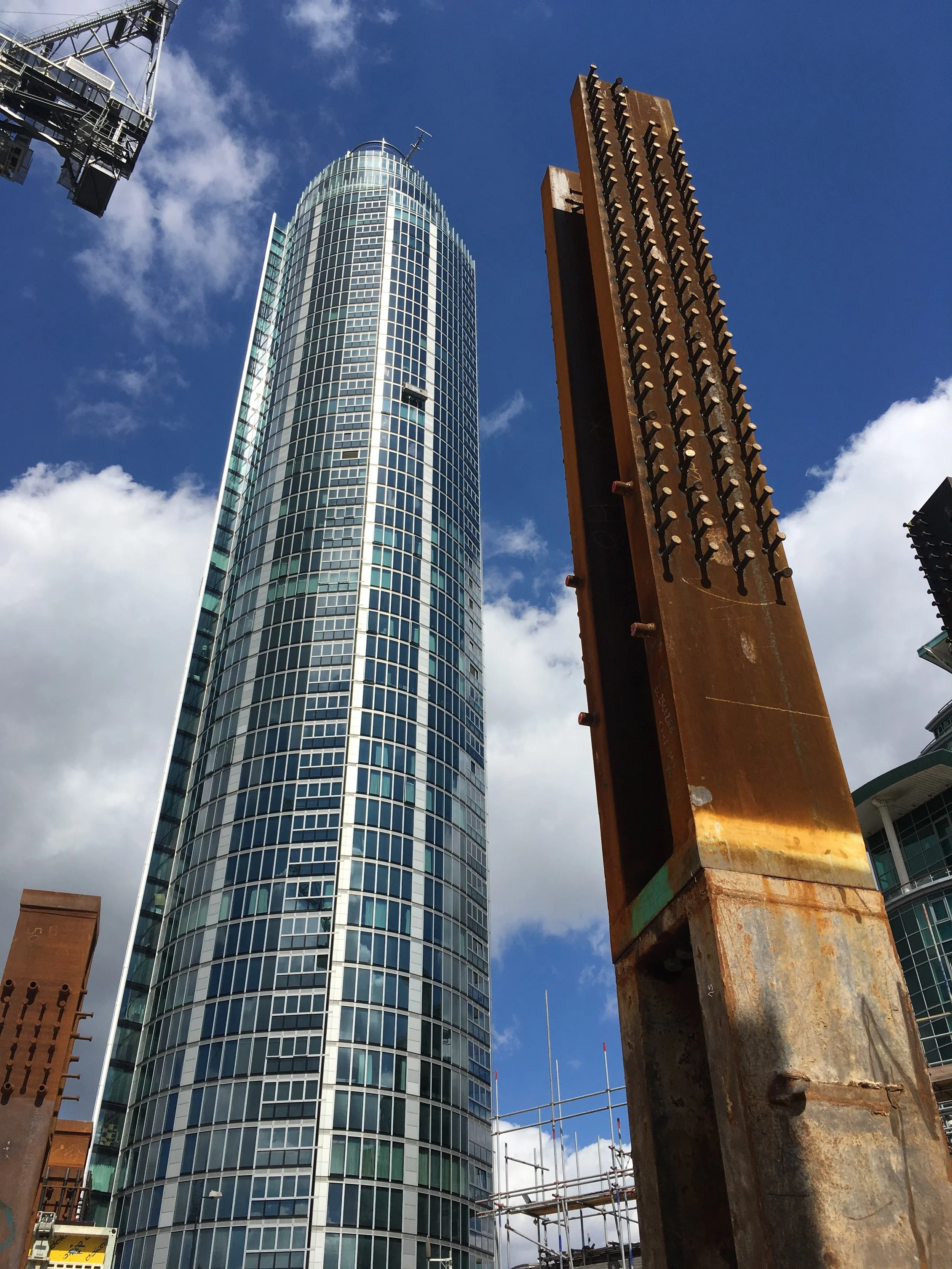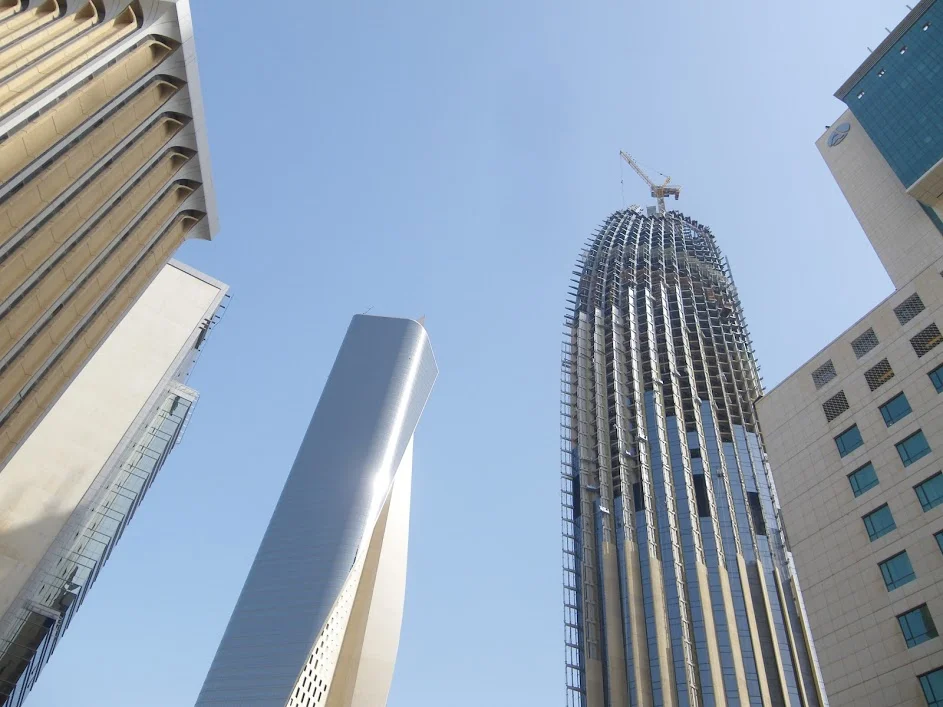Tall Buildings
ONE Nine Elms
London, United Kingdom
The scheme comprises a £700m twin tower project in the Nine Elms area, in excess of 200m tall. The A-squared scope comprised overall geotechnical consulting for the development of the holistic piled raft foundation scheme.
The project presented a series of challenges, including unusually complex ground conditions with presence of significant scour features in and an intricate structural arrangement, with the towers bridging over a substantial trunk sewer crossing the site. The foundation performance assessment and optimisation was key to the success of the scheme.
HIGHPOINT
London, United Kingdom
Settlement reducing piles were used to control the performance of the 180m tower foundation. Close collaboration with the structural engineer led to an efficient foundation solution, maximising value for the client.
Iterative analytical processes involving structural and geotechnical models were implemented for the foundation design and in order to evaluate the impact of the foundation behaviour on the superstructure load redistribution mechanisms.
National Bank of Kuwait
Kuwait City, Kuwait
Advanced 3D finite element analysis was largely used for the design and performance assessment of the piled raft foundation and tower/podium substructure.
Numerical modelling assumptions were based on data from a comprehensive ground investigation, comprising in situ high pressure dilatometer and downhole seismic testing as well as triaxial testing using small strain measurement devices.
MACAU MORPHEUS
Cotai, Macau
The unique and extravagant 40 storey building included a basement substructure of corresponding technical complexity. The foundation comprised a combination of existing and new large diameter bored piles with working loads of up to 100MN.
The performance of the foundation system under seismic and wind loading conditions was assessed considering the non-linear lateral behaviour of the piles and complex ground conditions, which included a significant thickness of hydraulic fill.
THE WARSAW SPIRE
Warsaw, Poland
The iconic tower development spearheads the urban regeneration under way in the Polish capital. Soil-structure interaction simulation was undertaken to support the design of the barrette assisted raft foundation for the 200m landmark tower in Warsaw. Challenging ground conditions and an ambitious foundation design led to the requirement for three-dimensional finite element soil-structure interaction analysis of the basement.















